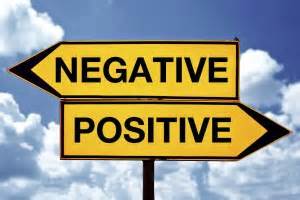Many people still do not understand the crucial difference between negative gearing and positive gearing when investing in real estate, here are some pros and cons for each strategy.
Positive gearing occurs when the annual rental income received from the property is higher than the annual loan repayments and costs. While you may earn extra income on your investment, this is taxable and must be declared at tax time. You will also have to include the capital gains tax you will have to pay if you decide to sell the property.
In additional to potentially high rental yields, fans of positive gearing argue that the cash flow from these properties can be used to fund a whole string of investment properties.
The benefit here is that you earn extra income but this is taxable. Also, make sure you include the capital gains tax you will have to pay if you decide to sell the property.
Advantages
- Returns money into your pocket from day one as the tenant is paying more than your expenses to hold the property.
- Under valued properties with renovation potential and subsequent depreciation benefits from the capital improvements, can bring a property from a net loss to a net gain.
- New properties with high tax benefits can achieve positive gearing.
- Increased borrowing capacity due to higher income.
- Positive geared properties can generate good capital growth prospects.
- Surplus cash flow can be used to either pay down the principal or stored in an offset account reducing interest repayments.
- Potentially increased saving capacity due to higher disposable income.
- Ability to live off passive income long-term.
Disadvantages
- Increased income which means you move into a higher tax bracket and pay more tax.
- Typically positive geared properties are “positive” because of depreciation benefits (after various tax advantages they become positive).
- These properties can be sourced near the city, however are typically referred to as being in regional areas. These regional properties may be largely dependent on one particular employment industry, making investments subject to greater volatility and therefore produce lower levels of capital growth over the long term.
- It can be harder to finance properties in regional areas as lenders have suburb restrictions due to higher perceived risk, resulting in a larger deposit required to fund the investment.
- It may be harder to lock in a long-term tenant due to lower population and employment demand.
- Tenants may be more problematic due to socio-economic factors such as crime or unemployment

Negative gearing occurs when the income from your investment property is less than the cost of your investment home loan and maintaining the property.
Benefits of negative gearing can include:
– The opportunity, in some cases, to offset losses incurred on your investment property against other forms of income as a tax deduction, reducing your taxable income.
– The potential to make long-term gains through capital appreciation, where the value of your property increases greater than the costs, leaving you with a profit.
What continues to attract investors to negatively geared properties, apart from the tax breaks, is the prospect of capital growth.
Advantages
- Offers immediate tax advantages as the cash loss is offset against other sources, reducing your taxable income.
- Generally considered to have greater potential for long-term capital gain.
- Negatively geared property will eventually generate a positive cash flow within a few years as rents tend to rise.
- Maximising borrowing to fund investments and subsequent property investments into the future.
- If the property is negatively geared, it has a tendency to be more affordable for renters.
- Negative gearing has made it easier for investors on high incomes to accumulate property portfolios.
Disadvantages
- Unless you are on a substantial income it would be hard to hold multiple properties.
- You are holding an asset which is generating a loss as your expenses are greater than your capital inflows.
- Usually takes a few years for rents to increase enough to become neutral / positively geared.
- You are reliant on property values increasing more than your outlay, otherwise you may not have a positive return.
- Negative gearing can put greater levels of stress on investors to meet repayments..
The property you select, will highly depend on your affordability factors as well as long-term investment goals. Before you decide to invest in any property, it is essential to consider any risks involved, to grow your knowledge and always get advice from experts to have a clear understanding of everything involved

